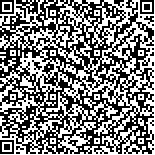本文已被:浏览 249次 下载 118次
Received:May 25, 2024 Published Online:October 20, 2024
Received:May 25, 2024 Published Online:October 20, 2024
中文摘要: 目的 探讨焦点解决心理护理联合热敷按摩在睑板腺功能障碍性(MGD)干眼症患者中的应用及效果。
方法 选取南方医科大学珠江医院2020年9月至2023年9月收治的382例MGD干眼症患者,采用随机信封法分为对照组(常规治疗、护理以及热敷按摩,n=191)和观察组(在对照组的基础上进行焦点解决心理护理,n=191),比较两组患者干预前后的临床症状评分、干眼症相关检测指标[泪膜破裂时间(BUT)、角膜荧光素染色(CFS)、泪液分泌实验]和心理状态[汉密尔顿抑郁量表(HAMD)、汉密尔顿焦虑量表(HAMA)]评分。
结果 干预前,两组患者的眼部疼痛感、眼部异物感、眼部畏光、眼部充血等临床症状评分、检测指标水平和心理状态评分比较差异均无统计学意义(P>0.05)。干预后,两组的临床症状各项评分及HAMD、HAMA评分均降低(P<0.05),且观察组低于对照组(P<0.01)。观察组、对照组干预后的CFS[(5.34±0.31)分 vs (7.49±1.31)分;(5.46±0.33)分 vs (7.54±1.32)分]均较干预前降低(P<0.05),且观察组低于对照组(t=3.663, P<0.01);干预后的BUT、泪液分泌实验测量值在观察组[(7.68±0.87)s vs (4.29±0.56)s;(9.32±1.21)mm/5min vs (4.21±0.69)mm/5min]和对照组[(7.45±0.89)s vs (4.32±0.51)s;(9.01±1.25)mm/5min vs (4.15±0.61)mm/5min]均较干预前升高,且观察组均高于对照组(t=2.554, P=0.011; t=2.463, P=0.014)。
结论 焦点解决心理护理联合热敷按摩可以有效缓解MGD干眼症患者的临床症状和体征,并改善患者者的负面情绪。
Abstract:ObjectiveTo explore the application and effect of solution-focused psychological nursing combined with hot compress massage in patients with dry eye disease due to meibomian gland dysfunction (MGD).
Methods A total of 382 patients with MGD admitted to Zhujiang Hospital of Southern Medical University from September 2020 to September 2023 were randomly selected, and were divided into control group (receiving routine treatment, nursing and hot compress and massage, n=191) and observation group (receiving solution-focused psychological nursing based on the control group, n=191) by random envelope method. The clinical symptom scores, dry eye related indicators [tear film break-up time (BUT), corneal fluorescein staining (CFS), Schirmer Ⅰ test]and mental state scores[Hamilton Depression Scale (HAMD) and Hamilton Anxiety Scale (HAMA)]scores of the two groups were compared before and after the intervention.
Results Before the intervention, there was no significant difference between the two groups in clinical symptom scores(such as eye pain, eye foreign body sensation, eye photophobia and eye congestion), detection indexes levels and psychological state scores (P>0.05). After intervention, the scores of clinical symptoms, HAMD and HAMA in both groups decreased (P<0.05), and the observation group was lower compared with the control group (P<0.01). After intervention, CFS in the observation group and the control group [(5.34±0.31) points vs (7.49±1.31)points; (5.46±0.33) points vs (7.54±1.32)points] were lower compared with before intervention(P<0.05), and CFS of the observation group was lower than that of the control group (t=3.663, P<0.01). After intervention, the BUT and Schirmer Ⅰ test in the observation group [(7.68±0.87)s vs (4.29±0.56)s; (9.32±1.21)mm/5min vs (4.21±0.69)mm/5min] and the control group [(7.45±0.89)s vs (4.32±0.51)s; (9.01±1.25)mm/5min vs (4.15±0.61)mm/5min] were all higher compared with before intervention, and those in the observation group were higher than those in the control group (t=2.554, P=0.011; t=2.463, P=0.014).
Conclusion Solution-focused psychological nursing combined with hot compress and massage can effectively alleviate the clinical symptoms and signs of patients with dry eye disease due to MGD, and can improve the negative emotions of the patients.
keywords: Solution-focused Psychological nursing Hot compress and massage Meibomian gland dysfunction Dry eye disease Symptoms Signs
文章编号: 中图分类号:R473.77 文献标志码:B
基金项目:广东省医学科学技术研究基金项目(B2024270)
| Author Name | Affiliation |
| HU Jia, ZENG Suiting, PEI Yue, HE Rujie, LI Jiali | Department of Ophthalmology, Zhujiang Hospital of Southern Medical University, Guangzhou, Guangdong 510260, China |
| Author Name | Affiliation |
| HU Jia, ZENG Suiting, PEI Yue, HE Rujie, LI Jiali | Department of Ophthalmology, Zhujiang Hospital of Southern Medical University, Guangzhou, Guangdong 510260, China |
引用文本:
